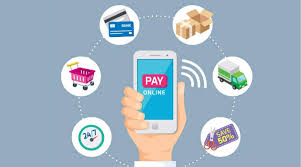10 Important Factors to Consider when Choosing a Payment Gateway Provider
1. Choose an Appropriate Payment Flow
As the business grows, the eCommerce payment gateway should be able to scale along effortlessly. Retailers must select the most appropriate payment flow for their business to add a payment gateway to a website.
A. A site with an integrated payment form is used to send information to a secure payment gateway: With this option, payment details are transmitted through a particular form. The form contains all the required information and passes it to the gateway provider through API calls. This may require additional programming and, therefore, boosts the overall cost of the payment gateway integration process.
B. iFrame or redirect for payments: Either customers are redirected to a secure, hosted payment page, or they are required to enter their information in an embedded iFrame on the website. Developers can leverage this option as it takes less time to integrate.
C. Having an Escrow system: This payment gateway option suits certain businesses. A secure escrow system built within the eCommerce platform can withhold funds before the admin grants the proper authority. If the platform works as an intermediary in trading operations or serves as an online marketplace, the traded funds of the two parties will be stored safely and arbitraged while the deal is in process.
2. Choose the Correct Product
A payment gateway provider is required on every website when selling products and services online. It allows customers to buy a product or service, while business owners receive these payments hassle-free. To choose the right product, retailers should consider how adaptable their payment solution is while keeping its security in mind.
It’s also essential to figure out how to add a payment gateway to the website – this doesn’t mean retailers have to do it themselves; they should hire an expert to take care of this. Select the best online payment method for the business and the customers.
3. Make Customers Feel Safe and Secure
Big companies have taken the online shopping experience above and beyond – raising customer expectations from all eCommerce websites. Even if websites run small businesses, customers expect high-quality websites that run on the most secure payment options. If they’re selling online, they are directly or indirectly competing with the likes of Amazon, Walmart, etc.
4. Consider Fees and Service Agreement Requirements
Pricing for payment gateways is commonly based on the type of transactions a business conducts (online or in-person) and even business sales, revenue consistency, transaction frequency, and the markets served.
5. Transactional Efficacy
According to a survey, more than 25 percent of customers will abandon a purchase if compelled to register for an account to complete it. If the checkout procedure uses a third-party shopping cart with an enrollment procedure built into the cart, ensure that retailers can make it an optional factor that allows for a “guest” checkout.
6. Make Checkout Easy on All Devices
Studies reflect that 79% of smartphone users have purchased online using their mobile devices in the last 6 months, 62.24% of people own a mobile phone in 2021, and these figures are increasing steadily. As website owners evaluate their payment gateway options, they need to provide an adaptable checkout experience optimized for different mobile devices and network types.
7. Multifaceted Functionalities
Online payment gateway service providers offer several features depending on their business needs. For example, suppose retailers provide their products and services worldwide. In that case, the payment gateway should provide a global solution and accept several credit cards, debit cards, and currencies in different countries.
8. Easy Integration Process
Online payment gateway integration isn’t a DIY process. Most payment gateways provide detailed instructions on integrating into popular eCommerce platforms like WooCommerce, Shopify and Magento, etc. The ideal solution is to select a payment gateway system that doesn’t botch up the website’s UX with a slow payment process. Select a payment gateway that makes it easy and beneficial for the customers to make payments on the website, where they can select a payment method of their choice.
9. Merchant Account
It is crucial to have a merchant account to receive funds through an online payment gateway. What is a merchant account? It’s used when customers make an online payment through a payment gateway; the money is temporarily transferred to a separate retailer account. This is different from the existing bank account. The cash stored in a merchant account has to wait until it gets approved by the customer’s processing bank. After approval, the money is transferred to the bank account.
10. Recurring Billing
Recurring billing allows retailers to set up an automatic billing cycle for their customers, making it an absolute necessity for companies with monthly payment plans. Subscription-based services like Netflix run on a recurring payment model. Moreover, non-profits have found utility in recurring billing, as this functionality enables organizations to collect funds from regular contributors effortlessly.



Comments
Post a Comment